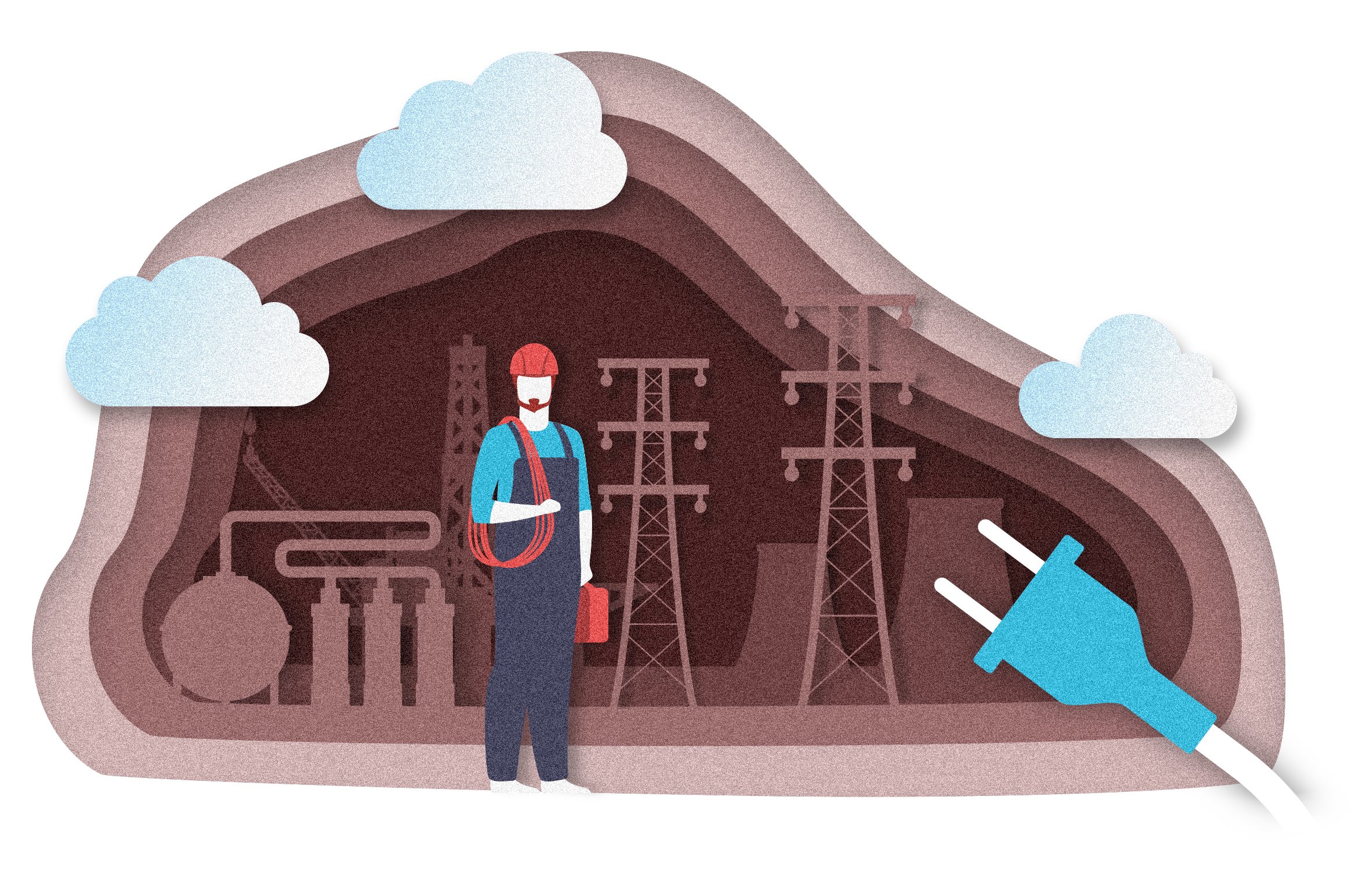Energy Blog: The Color of Energy
Energy Blog: The Color of Energy


In many recent discussions about the future of energy, the language has been colorful. My environmentalist friends push for green policies and programs with names like green choice. My friends in industry sometimes push back, noting that the grid is colorblind and cannot distinguish the green electrons of a wind farm from the brown electrons of an outdated coal plant.
Planners differentiate brownfield sites, where existing energy infrastructure is located, from greenfield sites representing new construction on nonindustrial lots. And those of us innovating to facilitate the clean energy transition will often classify hydrogen as being either green, blue, or gray, depending on the relative cleanliness of its production and use.
Despite the diversity of color in our language for energy, however, there is a remarkable lack of diversity in the workforce.
Editor's Pick: Energy Blog: Invisible Heroes of Coronavirus Crisis
After years of highly public diversity campaigns by major companies, in 2019 African-Americans still comprised less than 7 percent of the American workforce in oil & gas extraction. Coal mining is even more homogenous; according to the U.S. Bureau of Labor Statistics, only 4.6 percent of the coal mining workforce identifies as African- American, Asian, Hispanic, or Latino.
Even starker than the lack of diversity among rank-and-file is the reality of the glass ceiling for energy executives of color. Stats are hard to come by for the energy industry, but a McKinsey & Co. study with LeanIn.org, found that men and women of color make up just 14 percent of C-Suite positions across all sectors. Just one in 25 C-suite positions is a woman of color. Central Texas hero Paula Gold-Williams, who leads San Antonio’s electric and gas utility, stands out as the only female African-American CEO of a major energy company in the United States.
Why does this matter?
For one, people of color globally are the ones who have the least access to energy—the billion people without access to electricity live primarily in Sub-Saharan Africa, Latin America, and Southeast Asia.
More for You: Energy Blog: We Need More than STEM
It matters because they endure a higher risk from the energy sector’s pollution. One study in California found that African-Americans and Hispanics suffer risk exposure to environmental hazards nearly six times higher than whites.
An energy sector that drew more workers and executives from those communities might push to end that unfair status quo.
It’s also an economic challenge. As a legacy of decades of racial disparities in transportation and housing policies, the energy cost burden for minority neighborhoods exceeds that of white neighborhoods for a range of wealth levels. There are several reasons. Poorer families more often live with multiple generations in older homes that are leakier (hot air leaks out in the winter and leaks in during the summer) and they are less able to replace inefficient appliances. This combination is a perfect recipe for higher utility bills.
In fact, sometimes poor communities pay to subsidize wealthy customers. Many municipal utilities incentivize solar panel installation to improve grid reliability and reduce local air pollution. Often it is rich customers who take advantage of the subsidies because they are the ones who can afford solar arrays that easily cost $10,000 to $20,000 per rooftop after rebates.
Reader's Choice: Energy Blog: Millennials Will Save the World
As those subsidies are usually spread across the entire service area, customers who can’t afford to install double-pane windows or efficient air conditioners are helping to pay for solar arrays on the roofs of wealthy homeowners across town.
All told, it’s time for society to reckon with racial and social disparities that live on to this day. And because of the critical role energy access plays for fostering economic potential—and the acute damage caused by energy pollution—the energy industry should play a leadership role in solving this blight.
Diversifying the workforce and the leadership teams is the first obvious, visible step to broaden the range of voices in decision-making for critical projects.
Michael E. Webber is the Josey Centennial Professor of Energy Resources at the University of Texas in Austin and chief science and technology officer at ENGIE, a global energy company headquartered in Paris. His television series, Power Trip: The Story of Energy, is available on Apple TV, Amazon Prime Video, and local PBS stations.
Planners differentiate brownfield sites, where existing energy infrastructure is located, from greenfield sites representing new construction on nonindustrial lots. And those of us innovating to facilitate the clean energy transition will often classify hydrogen as being either green, blue, or gray, depending on the relative cleanliness of its production and use.
Despite the diversity of color in our language for energy, however, there is a remarkable lack of diversity in the workforce.
Editor's Pick: Energy Blog: Invisible Heroes of Coronavirus Crisis
After years of highly public diversity campaigns by major companies, in 2019 African-Americans still comprised less than 7 percent of the American workforce in oil & gas extraction. Coal mining is even more homogenous; according to the U.S. Bureau of Labor Statistics, only 4.6 percent of the coal mining workforce identifies as African- American, Asian, Hispanic, or Latino.
Even starker than the lack of diversity among rank-and-file is the reality of the glass ceiling for energy executives of color. Stats are hard to come by for the energy industry, but a McKinsey & Co. study with LeanIn.org, found that men and women of color make up just 14 percent of C-Suite positions across all sectors. Just one in 25 C-suite positions is a woman of color. Central Texas hero Paula Gold-Williams, who leads San Antonio’s electric and gas utility, stands out as the only female African-American CEO of a major energy company in the United States.
Why does this matter?
For one, people of color globally are the ones who have the least access to energy—the billion people without access to electricity live primarily in Sub-Saharan Africa, Latin America, and Southeast Asia.
More for You: Energy Blog: We Need More than STEM
It matters because they endure a higher risk from the energy sector’s pollution. One study in California found that African-Americans and Hispanics suffer risk exposure to environmental hazards nearly six times higher than whites.
An energy sector that drew more workers and executives from those communities might push to end that unfair status quo.
It’s also an economic challenge. As a legacy of decades of racial disparities in transportation and housing policies, the energy cost burden for minority neighborhoods exceeds that of white neighborhoods for a range of wealth levels. There are several reasons. Poorer families more often live with multiple generations in older homes that are leakier (hot air leaks out in the winter and leaks in during the summer) and they are less able to replace inefficient appliances. This combination is a perfect recipe for higher utility bills.
In fact, sometimes poor communities pay to subsidize wealthy customers. Many municipal utilities incentivize solar panel installation to improve grid reliability and reduce local air pollution. Often it is rich customers who take advantage of the subsidies because they are the ones who can afford solar arrays that easily cost $10,000 to $20,000 per rooftop after rebates.
Reader's Choice: Energy Blog: Millennials Will Save the World
As those subsidies are usually spread across the entire service area, customers who can’t afford to install double-pane windows or efficient air conditioners are helping to pay for solar arrays on the roofs of wealthy homeowners across town.
All told, it’s time for society to reckon with racial and social disparities that live on to this day. And because of the critical role energy access plays for fostering economic potential—and the acute damage caused by energy pollution—the energy industry should play a leadership role in solving this blight.
Diversifying the workforce and the leadership teams is the first obvious, visible step to broaden the range of voices in decision-making for critical projects.
Michael E. Webber is the Josey Centennial Professor of Energy Resources at the University of Texas in Austin and chief science and technology officer at ENGIE, a global energy company headquartered in Paris. His television series, Power Trip: The Story of Energy, is available on Apple TV, Amazon Prime Video, and local PBS stations.



